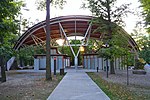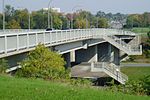Sprott School of Business

The Sprott School of Business is a doctoral-granting business school at Carleton University in Ottawa, Ontario, Canada – the nation’s capital. It is accredited by the Association to Advance Collegiate Schools of Business (AACSB) and the Network of International Business Schools (NIBS). The school explores complex management issues through its programs, interdisciplinary research and collaborative partnerships. It was named in 2001 for Eric Sprott, a well-known philanthropist, alumnus of the school, and precious-metals investor.Business studies have a long history at Carleton, with the first commerce degrees awarded in 1949. Today, the Sprott School of Business offers a range of undergraduate, graduate, and professional programs. The school is also highly research-oriented. Among its accolades, Sprott has won the Overall Institution Performance Award for research contribution at the Administrative Sciences Association of Canada (ASAC) conference in 2004, 2005, 2006, 2007, 2008, 2010, and 2012, the most such honours among all Canadian business schools.
Excerpt from the Wikipedia article Sprott School of Business (License: CC BY-SA 3.0, Authors, Images).Sprott School of Business
Colonel By Drive, (Old) Ottawa Capital
Geographical coordinates (GPS) Address Nearby Places Show on map
Geographical coordinates (GPS)
| Latitude | Longitude |
|---|---|
| N 45.382 ° | E -75.7 ° |
Address
MacOdrum Library
Colonel By Drive 1125
K1S 5R1 (Old) Ottawa, Capital
Ontario, Canada
Open on Google Maps







